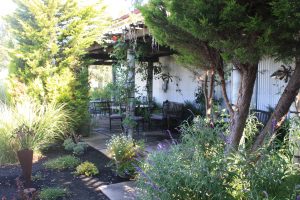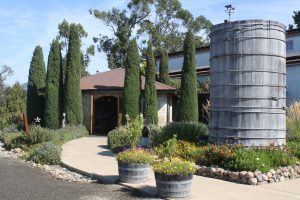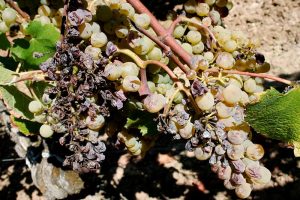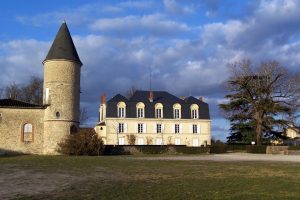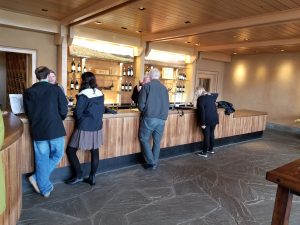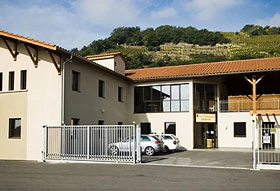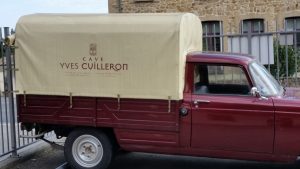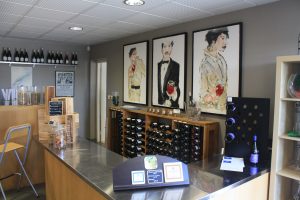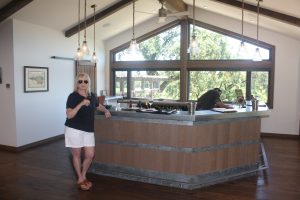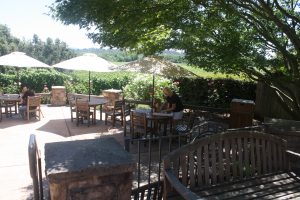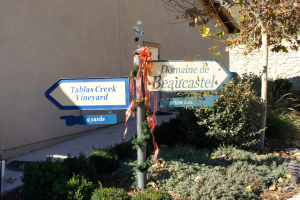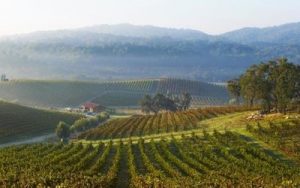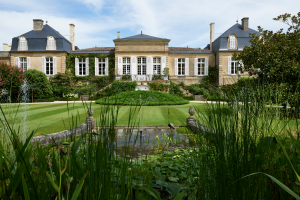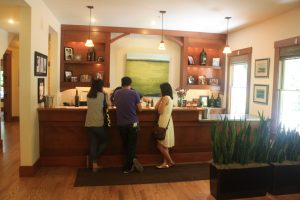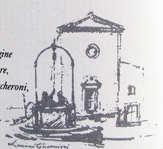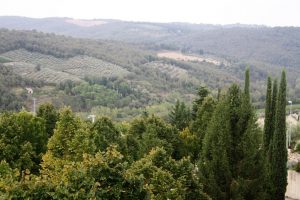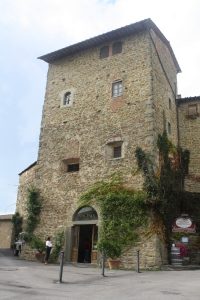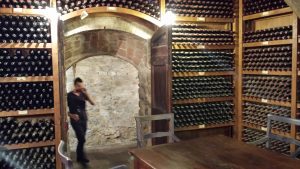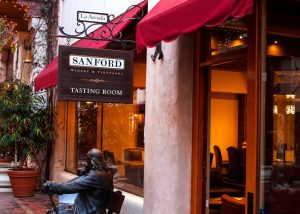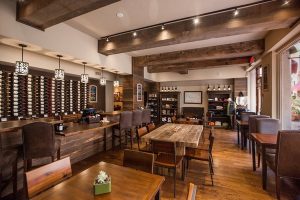Levy’s Rye Bread had a famous series of ads showing people not expected to be Jewish (a little African-American boy, an elderly Asiatic, a red-headed Irish cop) enjoying a piece of their bread, with a tag line that said “You don’t have to be Jewish to love Levy’s”. Well, you don’t have to be Jewish to love Hagafen Cellars, either.
“Hagafen” means “fruit of the vine” in Hebrew and is a word frequently invoked in the Passover Seder, a ceremonial dinner that wine is an important part of. Hagafen Cellars sits along the south end of the Silverado Trail in Napa. Except for the fact that all their wines are made in a kosher manner, there is nothing to distinguish it from any other winery in the region. Nor is there anything about the wines they serve to indicate that they are specifically for Jews.
Hagafen does make an especially wide range of wines, from the usual (Sauvignon Blanc, Chardonnay, Pinot Noir, Syrah, Merlot and several Cabernet Sauvignons) to some that aren’t usually found in Napa Valley (Tempranillo, Reisling). Quite a few are available for tasting. One enticing feature of a visit to Hagafen is the gardens surrounding the winery, where you are free to take your glass and wander or just sit on the patio.
The winery itself is a pleasant Mediterranean-style building and the tasting room is simple and wood lined. You can stand at the bar and taste, but if it happens to be a beautiful day, the friendly staff encourage you to take your wine out onto the patio
As mentioned, there’s nothing particularly Jewish about the wine or the surroundings and people of all faiths or none at all are welcome. But if you do tell the folks behind the bar that you happen to be Jewish, the conversation steers in a particular direction. No one asks what your religion is, but if you happen to know what Hagafen means, well, that’s a leading indicator. You might be asked about where your family is from and especially about the Passover customs in your family. We wouldn’t say that Gentiles are left out, but rather that Jewish visitors get a little more interaction of a particular sort.
Hagafen is quite justifiably proud of how often their wines are served at the White House. It seems that whenever Israeli leaders come to Washington, Hagafen Cellars is on the table.
We would not say that Hagafen Cellars is a destination winery. There are better wines in Napa Valley, although Hagafen’s are enjoyable. There are wineries with more eye-popping architecture. But if you are tasting along the Silverado Trail, Hagafen Cellars offers a unique tasting experience of kosher wines
